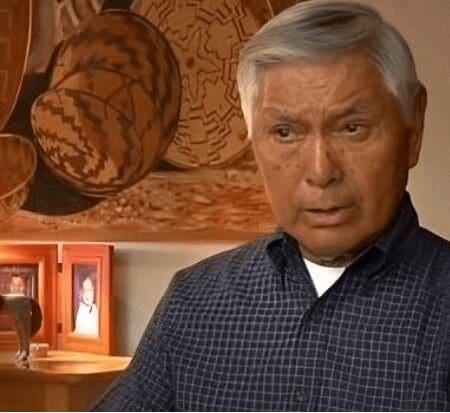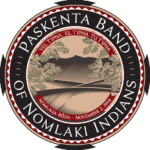Our History & Culture
Paskenta Band of Nomlaki Indians
A Tribe with a deep history and a resilient spirit of culture.
The Nomlaki people have lived on the same northern California lands for generations. We have raised children and buried loved ones here, hunted and gathered for our survival, and built shelters all throughout this region. We’ve spoken the Nomlaki language and traded with many other northern California tribes living across the forests and distant mountains.
There are two major divisions of Nomlaki Indians in California: The Hill Nomlaki, which is the Paskenta Band, and the River Nomlaki, which occupied the territory east of the Hill Nomlaki in the Sacramento River Valley. We are the central division of the larger Wintun people.
A Tribe with a deep history and a resilient spirit of culture.
Like other Tribes, we all lived freely until our contact with Europeans, which brought disease, death, and destruction. When the first missionaries arrived, and later when gold was discovered in the 1840s, our lives changed dramatically. We faced genocidal threats from the U.S. military and violent local groups.
In the spring of 1846, U.S. Army Captain John Fremont and his troops brutally attacked 1,000 innocent Indigenous women and children gathered at the river, an event known as the Sacramento River Massacre, one of the largest and least-known massacres in U.S. history.
A Tribe with a deep history and a resilient spirit of culture.

Those who survived this unjust attack were forcibly removed from our native homelands in 1854 to a reservation further west. Our ancestors walked there in 1863 on The Nome Cult Trail of Tears, a brutal and deadly journey through what is now the Mendocino National Forest.
After experiencing continued existential crises, our Tribe was hit hard. Families were separated, and many of our people would have no choice but to leave our land and never return.
Rescinding Our Identities in the 20th Century
The Paskenta Reservation, or Rancheria, was established from 1906 to 1909, and although it provided a home and shelter for the remaining members, it was just a small tract of Tribal land under federal trust.
By the mid-1950s, only a small number of families and individuals still lived on the reservation. When federal agents came to talk about the California Rancheria Termination Act of 1958, there were not many left to fight against this unjust proposition. The assimilation law forced Nomlaki people to rescind their identities as American Indians and sold the Paskenta Reservation to private owners in 1959.
Over the next few decades, members of the Paskenta Band all but disappeared. Some descendants lived among members of other local Indigenous tribes in the nearby Round Valley Reservation and the Grindstone Indian Rancheria, where they experienced U.S. governmental oversight. Some Nomlaki people migrated to the Sacramento area for work and others traveled farther to Arizona, Washington, Oregon, and Nevada to seek new lives.
Restoring Tribal Status
And yet, we persevered when a small but significant group of remaining Paskenta Tribal members, led by Everett Freeman, restored our Tribal status. On September 19, 1994, California Congressman Vic Fazio introduced the Paskenta Band Restoration Act into Congress. It was signed into law in November 1994.

The Paskenta Band Restoration Act extended federal re-recognition and restored our Tribal rights and privileges. The Tribe would once again have a seat at the table of the more than 500 federally recognized Tribes across the U.S.
We established a constitution to govern the Tribe and the election of a Tribal Council as the governing body. As a federally recognized Tribe, we once again exercised jurisdiction over our lands and people and negotiated to contract with the federal government for health, education, and other services. Four years later, we bought back 2,000 acres of our aboriginal land near Corning.
In 2014, we breathed new life into the Tribe with a leadership transition and reorganization of our Tribal Council and Administration. Today, we are a united community rooted in a shared culture, history, and joy.
Our people’s resiliency in the face of so much historical trauma continues to inspire our hopeful future.
